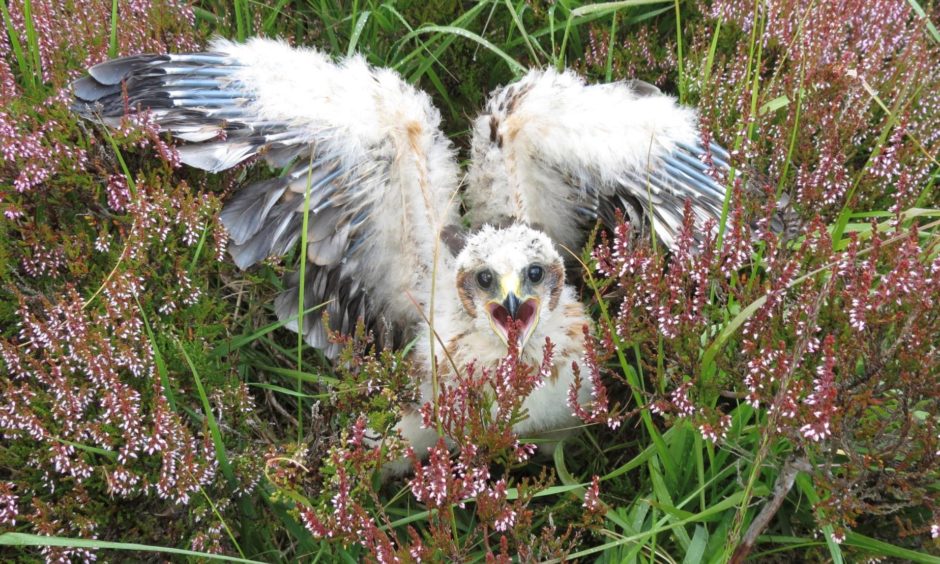I instantly knew something was different about this bird of prey as it swept low across the haugh of my local river on widespread wings.
It was slightly smaller than a buzzard and slenderer in build, with an underlying agility and elegance.
As it veered to one side, a white rump band and dark-ringed brown tail momentarily flashed into view.
Oh, my goodness, this was a female hen harrier and first time I had ever seen one so close to my home patch.
As quick as it had appeared, it was gone, having vanished in among the tussocks of rushes and grasses that proliferate along the riverside flood meadows.
Scarce birds
Hen harriers are scarce birds of prey, nesting on the heather moorlands and young forestry plantations in the highlands.
In winter, however, they haunt lower-lying areas, such as rough grasslands and marshes.
This sighting brought back fond memories from when I lived in the north-east, where I frequently saw hen harriers quartering the moorlands near Glen Dye and the Forest of Birse.
It was the male birds that especially caught the eye, with their wonderful light-grey plumage and slightness of form that could easily be mistaken for a gull when seen from a distance.
Held aloft on buoyant wings, it was wonderful to watch these harriers drifting and floating across moorland with an easy and graceful elegance.
On one occasion near Finzean, a recently fledged hen harrier circled above my head calling.
I couldn’t tell whether it was anxious by my presence or just curious, and even when I went on my way, it continued to follow me, making frequent low passes. These are the memories from which dreams are made.
Persecuted
Sadly, all is not well with our hen harrier population. Prior to the middle of the 19th century they were widespread across the UK, but when driven grouse shooting became popular, they were routinely persecuted and numbers plummeted.
While numbers have recovered to a degree from their lowest point at the turn of the 20th century, hen harriers are not nearly as widespread as they should be, partly because illegal persecution still continues to this day.
Hopefully, such activities are in decline in these more enlightened times and will soon come to an end, for the killing of scarce raptors is simply not an option for a country that should be setting an international conservation example to others.
Humanity must co-exist with nature, rather the continually trying to abuse it, otherwise the environment that gives us life will tumble like a house of cards.
I walked further along the haugh in the hope of spotting the hen harrier once more, but it never reappeared.
I had a feeling it was resting on a concealed fence post somewhere, watching my every move, but persistent scanning with binoculars still failed to uncover its secluded perch.
On turning for home, I inadvertently flushed a snipe from a boggy, rush-spiked margin. It soared high into the sky on rapidly beating wings, fading away until it was but a speck in the grey autumnal sky.












